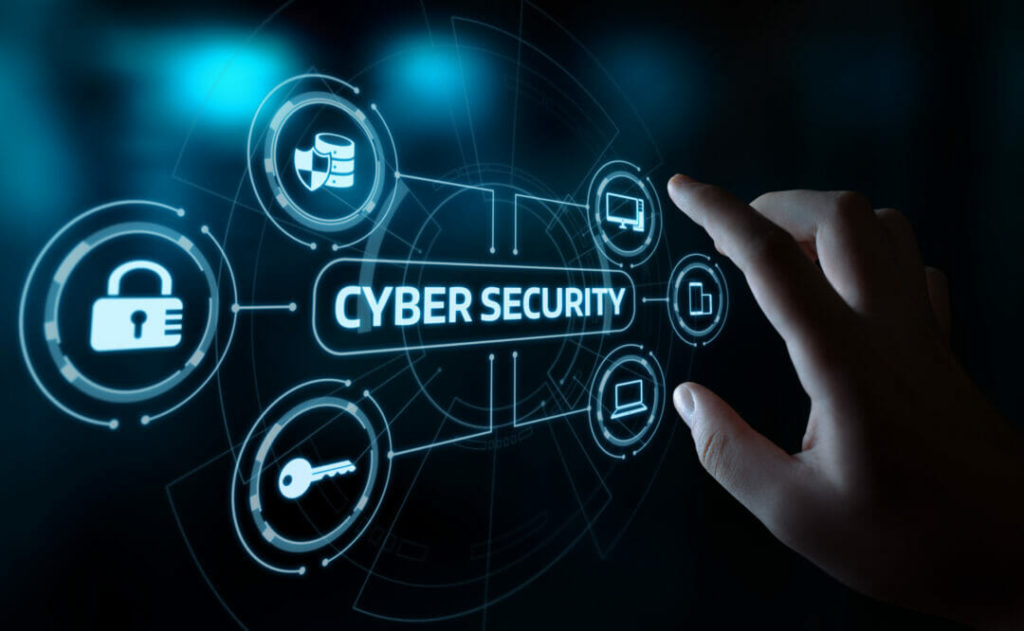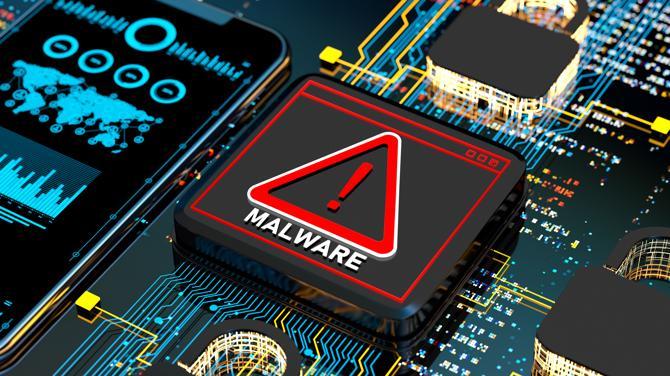In today’s digital era, cybersecurity is no longer a luxury, but a necessity. In our increasingly interconnected world, the information we share online is constantly at risk from a myriad of cyber threats. This post, “Shield Your Digital World: A Beginner’s Guide to Cybersecurity”, serves as a comprehensive roadmap for anyone seeking to fortify their online defenses.
Drawing on expert advice, it delves into the fundamentals of cybersecurity, covering everything from understanding common threats to implementing effective security measures. Whether you’re an individual seeking to protect personal data or a small business owner looking to secure your enterprise, this guide provides the crucial insights you need to take control of your digital safety.
Don’t leave your digital world exposed to the risks of cyber threats. Stay tuned to discover practical steps you can take to better protect your data, digital assets, and your peace of mind. Empower yourself with the knowledge to combat cyber threats, because your digital safety is a priority, not an option. Let’s venture into the world of cybersecurity, and together, let’s build a safer digital environment for all.
Understanding the Basics of Cybersecurity
At its core, cybersecurity encompasses the strategies, technologies, and practices designed to protect internet-connected systems—including hardware, software, and data—from unauthorized access, cyberattacks, and digital intrusions. It is the digital armor that safeguards the integrity, confidentiality, and availability of information as it moves through an increasingly complex and interconnected world.

Cybersecurity measures are vital for ensuring that sensitive information remains safe from a variety of threats. These threats range from simple, opportunistic malware to highly sophisticated attacks orchestrated by organized cybercriminal groups or even nation-states. Such attacks can lead to catastrophic consequences, including financial loss, operational disruption, reputational damage, and even legal liabilities.
The Importance of Cybersecurity
In today’s digital-first environment, the importance of cybersecurity cannot be overstated. With every innovation—from cloud computing to IoT devices—new vulnerabilities emerge. The proliferation of mobile devices, remote work environments, and online services has created an ever-expanding attack surface that malicious actors are quick to exploit.
Cyber threats are not just theoretical risks. Real-world incidents such as ransomware attacks on hospitals, data breaches affecting millions of consumers, and large-scale infrastructure hacks have demonstrated the critical need for strong cyber defense. As digital transformation accelerates across industries, the role of cybersecurity shifts from a supportive IT function to a foundational pillar of business continuity and personal safety.
For individuals, cybersecurity is equally important. Protecting personal data such as financial information, login credentials, and private communications is essential to preventing identity theft, fraud, and other privacy violations.
Cybersecurity vs. Information Security
While the terms “cybersecurity” and “information security” are often used interchangeably, there are subtle but important differences between them. Cybersecurity specifically refers to the defense of digital systems and networks against cyber threats. It deals with technologies and protocols that protect data in transit, in use, and at rest within digital environments.
Information security, on the other hand, is a broader concept. It encompasses the protection of all forms of data—whether digital or physical. This includes protecting paper documents, securing physical access to data centers, and implementing policies to control who can access sensitive information. In short, cybersecurity is a subset of information security, focused on combating threats in the digital realm.
Together, these disciplines form a comprehensive approach to protecting data and systems in the modern era. Understanding both is essential for building a well-rounded security strategy that addresses the full spectrum of risks facing individuals, organizations, and society at large.
Key Elements of Cybersecurity
Cybersecurity is a multifaceted discipline, made up of several essential elements that function together to protect an organization’s digital infrastructure. Each component plays a distinct role in building a robust defense against a wide array of cyber threats.
Network Security
Network security forms the backbone of any cybersecurity strategy. It encompasses policies, practices, and technologies designed to safeguard the integrity, confidentiality, and availability of data as it travels across or resides within a network. Measures like firewalls, intrusion detection systems, virtual private networks (VPNs), and secure network architectures work to block unauthorized access, prevent exploitation, and ensure safe data transmission.
Application Security
With applications being a frequent target of cyber attacks, application security is vital. It involves the implementation of security features within software to detect, mitigate, and prevent threats. This includes code audits, penetration testing, and updates or patches to address known vulnerabilities. Application security should be considered throughout the software development lifecycle—from design and coding to deployment and maintenance—to minimize potential entry points for attackers.
End-User Education
No cybersecurity strategy is complete without considering the human element. Often, users are the most vulnerable point in a security system. End-user education focuses on raising awareness about safe online behavior, such as recognizing phishing attempts, creating strong passwords, and handling sensitive data responsibly. Regular training and simulated threat exercises can greatly reduce the risk of human error, turning users into the first line of defense rather than a security liability.
Best Practices in Cybersecurity
There are several best practices that individuals and organizations can adopt to boost their cybersecurity defenses.
Use Strong, Unique Passwords
Passwords are the first line of defense against unauthorized access. A strong password should be at least eight characters long and include a mix of uppercase and lowercase letters, numbers, and symbols. Also, never use the same password for multiple accounts.
Keep Software and Systems Up to Date
Regularly updating software, operating systems, and applications is essential for cybersecurity. Most updates contain security patches that fix vulnerabilities that hackers can exploit.
Implement a Firewall
A firewall acts as a barrier between your trusted internal network and untrusted external networks, such as the internet. It uses predetermined rules to allow or block traffic.
Understanding Cyber Threats
Being aware of the various cyber threats is key to developing an effective cybersecurity strategy.
Malware
Malware is any software intentionally designed to cause damage to a computer, server, client, or computer network. Types of malware include viruses, worms, Trojan horses, ransomware, spyware, adware, and scareware.

Phishing
Phishing is a type of cyber attack that uses email, text messages, or spoofed websites to trick victims into revealing sensitive information, such as usernames, passwords, credit card numbers, or Social Security numbers.
Man-in-the-Middle (MitM) Attacks
In a MitM attack, the attacker secretly relays and possibly alters the communication between two parties who believe they are directly communicating with each other.
Prevention and Response to Cyber Threats
In the evolving landscape of digital threats, cybersecurity is no longer a reactive field—it must be proactive, strategic, and resilient. Successfully shielding an organization or personal system from cyberattacks involves both front-line defenses and the preparedness to respond effectively when incidents occur. A robust cybersecurity framework must include comprehensive prevention strategies as well as clearly defined response and recovery procedures.
Implementing a Strong Security Policy
At the heart of any cybersecurity strategy lies a well-crafted security policy. This foundational document sets the tone for an organization’s approach to digital safety and outlines the expectations for all employees, contractors, and stakeholders. A strong policy should address a wide array of issues including acceptable use of systems, data classification and handling, password management, access control, mobile device usage, remote work protocols, and breach reporting procedures.
More importantly, the policy must not be static. As threats evolve and technologies advance, so too must the security policies. Regular reviews and updates ensure that organizations remain aligned with the latest threat intelligence, legal requirements, and industry best practices. Additionally, organizations should enforce policy adherence through training programs and consequences for non-compliance, reinforcing a culture of cybersecurity from the top down.
Backup and Disaster Recovery Planning
Cyber resilience hinges on the ability to recover quickly from attacks. One of the most effective ways to mitigate the damage caused by a breach, ransomware incident, or data loss event is to have a robust backup and recovery strategy in place.
This plan should include:
-
Regular, automated backups of critical data, systems, and applications, stored securely in both on-site and off-site locations or cloud environments.
-
Versioned backups to allow rollback to specific points in time, particularly useful in ransomware scenarios where encrypted files need to be restored.
-
Routine testing of the recovery process to ensure that systems can be restored swiftly and without data corruption.
-
Clearly documented procedures so that IT teams can act without hesitation in crisis scenarios.
Without a tested and reliable recovery protocol, even the most sophisticated cybersecurity defenses can fall short under the pressure of an active attack.
Developing an Incident Response Plan (IRP)
An Incident Response Plan (IRP) acts as a playbook for dealing with cyber incidents, helping minimize damage and facilitate a faster recovery. This plan should be developed collaboratively across departments—including IT, legal, communications, and human resources—and tested regularly through simulated breach scenarios.
A comprehensive IRP typically follows these phases:
-
Preparation – Establishing roles, responsibilities, and escalation procedures; identifying critical assets and systems; and ensuring employees are trained.
-
Identification – Detecting and confirming the occurrence of a cyber incident, whether through automated monitoring or human observation.
-
Containment – Isolating affected systems or networks to prevent further spread of the attack while maintaining essential business functions.
-
Eradication – Removing the threat from all affected systems and identifying its source to avoid future recurrences.
-
Recovery – Restoring systems to normal operation, validating system integrity, and ensuring that vulnerabilities are patched or mitigated.
-
Lessons Learned – Conducting a post-mortem analysis to evaluate what happened, how the response unfolded, and what improvements are necessary.
Effective incident response is as much about coordination and communication as it is about technical remediation. Having predefined communication channels for internal teams and external stakeholders—including customers, media, and regulatory bodies—is crucial during high-stress scenarios.
Fostering a Culture of Security Awareness
Even with the best technical controls in place, human error remains a leading cause of security breaches. This underscores the importance of continuous cybersecurity education and awareness at every level of an organization. Cybersecurity should not be viewed as the sole responsibility of the IT department—it must be integrated into the organizational culture.
Training should include:
-
Recognizing phishing and social engineering attempts
-
Safe handling of sensitive information
-
Proper use of company systems and devices
-
Reporting suspicious activity without fear of reprisal
Regular awareness campaigns, simulated phishing tests, and gamified learning modules can keep security top of mind and transform employees from potential liabilities into informed defenders.
In conclusion, a holistic cybersecurity strategy demands far more than installing antivirus software or setting up firewalls. It requires an ongoing commitment to risk management, disaster preparedness, and continuous improvement. Preventing cyber threats is only half the battle—the other half lies in responding with speed, clarity, and confidence when incidents inevitably arise. By investing in proactive defenses and robust incident response capabilities, individuals and organizations alike can significantly reduce their vulnerability and build a digital environment that is not only secure but resilient.
Conclusion
In conclusion, Shield Your Digital World: A Beginner’s Guide to Cybersecurity offers not only a comprehensive foundation in cybersecurity principles but also serves as a timely call to action in our increasingly digitized world. As we find ourselves more connected than ever before—through smartphones, cloud platforms, smart home devices, and digital banking—our exposure to cyber threats continues to grow exponentially. This guide helps bridge the knowledge gap, empowering users of all technical backgrounds to take control of their online safety.
The strength of this guide lies in its ability to simplify complex concepts without compromising depth or accuracy. It demystifies cybersecurity jargon and translates it into actionable steps anyone can follow, whether it’s choosing a strong password, recognizing a phishing email, or setting up an effective incident response plan. The layered approach it presents—covering preventive strategies, threat awareness, and post-incident response—equips readers with both knowledge and confidence.
More than a set of tools, cybersecurity is a mindset—an ongoing practice of vigilance, adaptability, and responsibility. This guide reminds us that the digital safety of our personal lives, families, businesses, and communities begins with awareness and is sustained through proactive habits.
Ultimately, cybersecurity is not just about preventing attacks—it’s about protecting what matters most in the digital age: our data, our identities, our privacy, and our peace of mind. As cyber threats evolve, so must our understanding and our defenses. This guide serves as a crucial first step in that journey, laying the groundwork for a safer, smarter, and more secure digital future.




